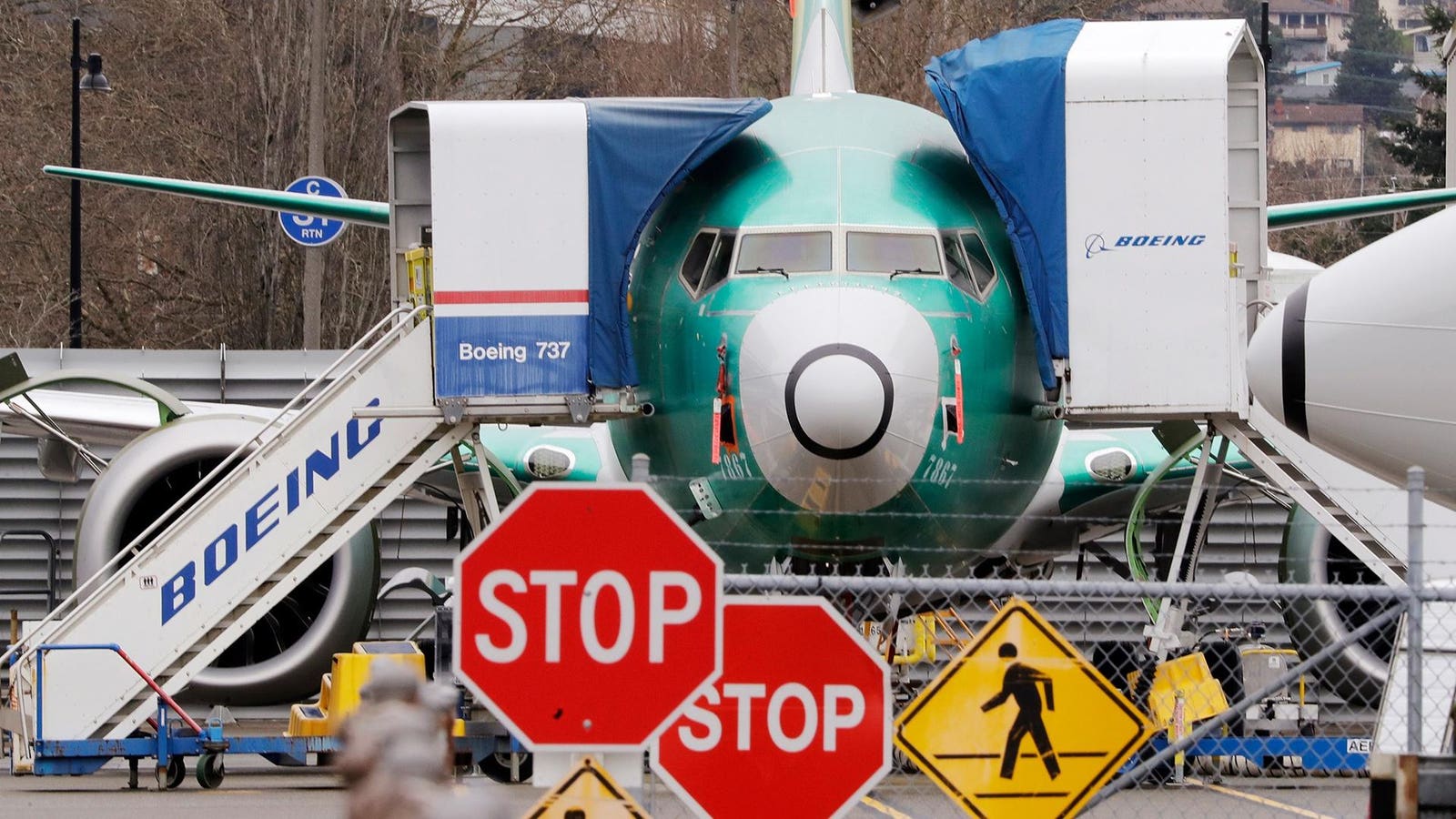With airlines getting 40% fewer new planes than scheduled, expect higher fares this summer and increased risk of delays and cancellations.
By Jeremy Bogaisky, Forbes Staff
U.S. airlines had been looking forward to a strong summer. Holding them back: safety issues at Boeing and supply chain challenges at Airbus that are delaying deliveries of new planes.
Under intense federal and public pressure to improve the quality of its planes, Boeing’s production of 737 Max jets has slowed to a trickle. In March the company said it delivered 24 of its bestselling plane to customers, down 53% from the same month a year ago. In the first two weeks of April, it delivered just three, according to the aviation analytics firm Cirium.
Boeing’s woes, combined with supply chain issues at rival Airbus and engine durability issues that have grounded planes for inspections, have led airlines to reduce flights for the upcoming summer travel season and slow pilot hiring. That could mean higher fares in some markets and increased risk of disruption as airlines rely more on older planes, which are more prone to mechanical failures, analysts say.
“The bookings are being made now, the demand for air travel is coming and the airlines have to figure out how they do more with less,” Helene Becker, an airline analyst with TD Cowen, told Forbes.
Boeing has been struggling to fulfill airlines’ orders for years after two deadly 737 Max crashes in 2018 and 2019 brought its assembly lines to a standstill. Then, as the company restarted production in May 2020, the Covid pandemic eviscerated demand. The company expected 2024 to be the year when it would finally get its 737 factory in Renton, Washington running smoothly again, starting with a goal of 38 planes a month and working up to 47. Those plans have gone up in smoke after a panel popped off a relatively new Alaska Airlines Max jet in flight in January. Now Boeing is facing multiple investigations, with the Federal Aviation Administration capping its output at 38 planes a month and stationing more inspectors at the factory. The company has said it’s slowing the line purposefully as it seeks to improve manufacturing quality.
U.S. passenger airlines should receive 301 new planes this year, down 40% from the number they had expected as of the beginning of 2023, according to estimates by Martha Neubauer, a senior associate at AeroDynamic Advisory. While Boeing is in the spotlight, rival Airbus accounts for 38% of the missed deliveries this year to airlines worldwide, according to Neubauer. It’s struggled with supply chain issues, particularly with engines, as it’s tried to raise production rates to meet strong demand.
Airbus spokesman Justin Dubon wrote in an email that the planemaker has told customers “the supply chain continued to be the limiting factor and pacing element in our near to mid term deliveries.” Airbus plans to deliver 800 jets this year.
Boeing directed Forbes to comments made by CFO Brian West on March 20 at an investor conference: “Ultimately, our job is to make sure that we can execute on behalf of our customers in a way that’s more predictable, more dependable, with the highest quality in mind and we’re going to do that one airplane at a time.”
NO PLANES, NO GAIN
These seven U.S. airlines are set to receive 48% fewer planes this year from Boeing and Airbus than they had expected as of the beginning of 2023.
How Airlines Are Handling The Delays
Among the most impacted carriers is United Airlines, which has charted ambitious growth plans under CEO Scott Kirby. As of the beginning of 2023 it had expected to receive 127 new planes this year, according to financial filings. It’s now assuming it will get 66.
United is cutting flights accordingly, reducing its total passenger seat capacity for the summer quarter by 4.3% as of Monday, compared to when it first published its full schedule, according to TD Cowen’s Becker and fellow analyst Tom Fitzgerald.
United will still be growing its passenger capacity by 5% over the previous summer as measured by available seat miles. But that’s sharply lower growth than last year, when its capacity was 15% greater than summer 2022. It’s also stopped hiring new pilots and earlier this month asked pilots to volunteer for unpaid leave in May, which may extend into the summer.
To address the cost and complexity of the pileup of incoming new planes created by Boeing’s “repeated delivery delays,” CFO Mike Leskinen said Wednesday on United’s first-quarter earnings call that the company was planning to spread out future deliveries to about 100 a year from 2025 to 2027. That will allow it to have a steadier tempo of hiring and training, as well as capital expenditures.
“We will continue to face struggles on the delivery schemes from Boeing and Airbus,” said CCO Andrew Nocella. “But hopefully …we’ve built in the appropriate insurance plans.” A United spokesperson declined to comment further.
United’s problems aren’t only due to Boeing. The Federal Aviation Administration is investigating the airline following a recent string of in-flight safety incidents, and as a result United has said it’s hit pause on two new international routes, including Newark to Faro, Portugal. The FAA probe is delaying the use of three new planes until the summer quarter.
Also reducing the number of planes available to airlines this summer: problems with engines made by one of Airbus’s suppliers, Pratt & Whitney. Airlines like Hawaiian, Spirit and JetBlue are pulling Airbus planes out of service one by one for time-consuming engine inspections. The latter two are also restructuring their networks after their planned merger was blocked on antitrust grounds.
Southwest Airlines, which only flies Boeing jets, is expecting the embattled manufacturer will deliver about 20 planes this year, according to Reuters, down from 86 it was planning for as of the beginning of 2023. That total had included 45 of the 737 Max 7, the smallest version of the plane whose certification has taken longer than expected due to new tests required by Congress in response to the MAX crashes. It’s facing further delays in the wake of the Alaska incident over an issue with the engine anti-icing system discovered in current Max models. The same issues have also delayed certification of the 737 Max 10, the largest version of the Max, leading one its largest buyers, United, to give up on getting the plane in the near term and pivot to line up Airbus planes to lease instead starting in 2025.
So far, Southwest has cut its summer capacity by 1.4% since its schedule was first published, which would still be up 4% over the previous summer. Southwest also said last month it would scale back its hiring of pilots this year to half as many as planned and flight attendants by 60% due to Boeing’s delivery delays.
A Southwest spokesperson said the airline couldn’t comment in the quiet period before its quarterly earnings report next week.
Also pulling back: all-Boeing airline Alaska, whose CFO, Shane Tackett, said on its quarterly earnings call Thursday that the airline could get “somewhere between 10 and 20” planes from Boeing this year. It had expected 26 as of January 2023. Alaska has trimmed its summer capacity by 6.7%. Amid uncertainty over when Boeing will get back to a stable production rate and certify the 737 Max 10, of which Alaska has ordered 45, the airline could decide to take fewer planes, he said. “It will probably be less than we had been thinking a year ago.”
Travelers wait in the terminal as an Alaska Airlines plane sits at a gate at Los Angeles International Airport in Los Angeles, on January 11, 2023.
AFP via Getty Images
In an email, an Alaska spokesperson told Forbes, “We’re confident in our ability to operate our schedule reliably to deliver our guests to their vacations and summer plans.”
Airlines’ August schedules remain relatively unchanged so far, suggesting more cuts could come, a Cirium spokesperson said.
Experts said capacity was most likely to be trimmed in places with multiple flights a day, and to secondary cities rather than major hubs. For example, in the vacation hotspot of Orlando, Florida, United has cut almost a third of flights scheduled from Reagan National Airport in D.C. in July, leaving it with an average of nine flights a day, according to data from Cirium.
One Solution: Older Planes
In some cases, the plane delivery delays are leading to older planes being kept in service longer, particularly widebodies used for international flying, where demand has been particularly strong, analysts said.
For example, because Boeing has struggled to regain the pace of deliveries for the 787 after federal regulators halted production for a year between 2021 and 2022, United has kept flying its aging 767-300s overseas.
Southwest reportedly now plans to keep more than a dozen 737s flying that it had planned to retire this year, requiring millions more in maintenance spending.
Older planes tend to break down more regularly. Add that to the reduced number of new planes, and it raises the odds for travel disruptions this summer — particularly since airlines don’t hold too many spare planes in reserve for when things go wrong, pointed out Henry Harteveldt of Atmosphere Research.
For some airlines, the forced easing up on domestic growth plans provides a welcome operational breather after having ramped up service quickly following the near freeze in travel during the worst of the pandemic in 2020, said Geoff Murray, a commercial pilot and longtime consultant for Oliver Wyman who retired from the firm last month.
Growth in domestic yields – the amount of revenue per passenger mile — has trailed yields for international flights, he noted.
Particularly with domestic-focused low-cost and ultra-low-cost carriers, “I think they’re quietly saying, certainly not in the public domain, ‘Hey, this is an opportunity for us to catch up,’ ” Murray said.
There’s another positive for airlines: a tighter schedule should lead to fuller planes and higher profits. “It’s not a bad thing because it does enable them to generate better margins,” said Becker.
The slowdown in pilot hiring by the big carriers offers another silver lining, said Murray. It should allow regional airlines, which the better-paying majors had raided for talent amid the post-pandemic travel rebound, to staff back up and restore service to some of the secondary cities they’ve been forced to drop over the past few years.
Plenty of factors play into whether your flight gets disrupted during the busy summer season. The biggest is weather: thunderstorms can wreak havoc on schedules. This summer, Harteveldt said labor unrest could be a risk, with United and American in contract negotiations with their flight attendants.
But there’s at least one thing that could help schedules run smoother. Airlines that shed thousands of workers during the deep travel downturn of the pandemic brought on a surge of rookie staffers in 2021 and 2022. Those gate agents, baggage handlers and other workers are now better at their jobs, improving efficiency, noted Becker.










